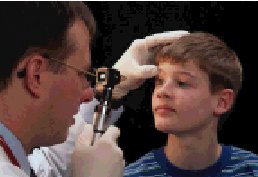< Page 11 of 12 >
1 2 3 4 5 6 7 8 9 10 11 12
Kids and Contact Lenses

There are times when contact lenses may be the best option for your youngest patients.
After all, contact lenses provide children many of the same optical advantages as they do adults. These include better peripheral vision, less distortion and less troublesome image size differences. And contact lenses can eliminate the unwanted prismatic effects of spectacles. Also, the hyperopic patient will experience a decreased accommodative demand when using contact lenses.
Here are some instances where contact lenses may be a viable option for children.
1. Excessive Hyperopia, Myopia or Astigmatism
A highly hyperopic child often experiences considerable distortion and
undesirable prismatic seffects from high-plus spectacle lenses. This,
in turn, leads to compromised visual acuity and binocularity.
Further
complicating the effects of spectacles is that the patient rarely looks
through the optical center. The weight of the spectacle lenses often
makes them slide down the small bridge of the nose, forcing the child
to view through the upper portion of the lens. Also, active children
often knock their frames out of adjustment, so these kids are even less
likely to view through the center. Three things can greatly compromise
cosmesis: magnification of the eyes, the need for lenticularized lenses
and difficulty in maintaining a proper fit of the frame.Contact
lenses can help eliminate these problems and should be considered as
a possible option.
The highly myopic
child also may have distortion, prismatic effects, heavy lenses, poor
fit and diminished cosmesis from glasses. He or she experiences minification
of images rather than magnification. This minification can complicate
a child�s ability to adapt to spectacles, especially when reading. Again,
contact lenses can help eliminate these problems.
Children with high amounts of astigmatism experience similar advantages from contact lenses as hyperopes and myopes, perhaps more so because the distortion is worse for high astigmats who wear spectacles. Again, contact lenses cause less disparity between a patient�s eyes, both in cosmetic appearance and the image size the child sees.
In some instances the child�s refractive status does not mandate contact lens wear, but the lenses can dramatically improve his or her performance at frequent activities. For example, a young athlete may enjoy improved peripheral awareness while wearing contact lenses rather than spectacles.
< Page 11 of 12 >
1 2 3 4 5 6 7 8 9 10 11 12